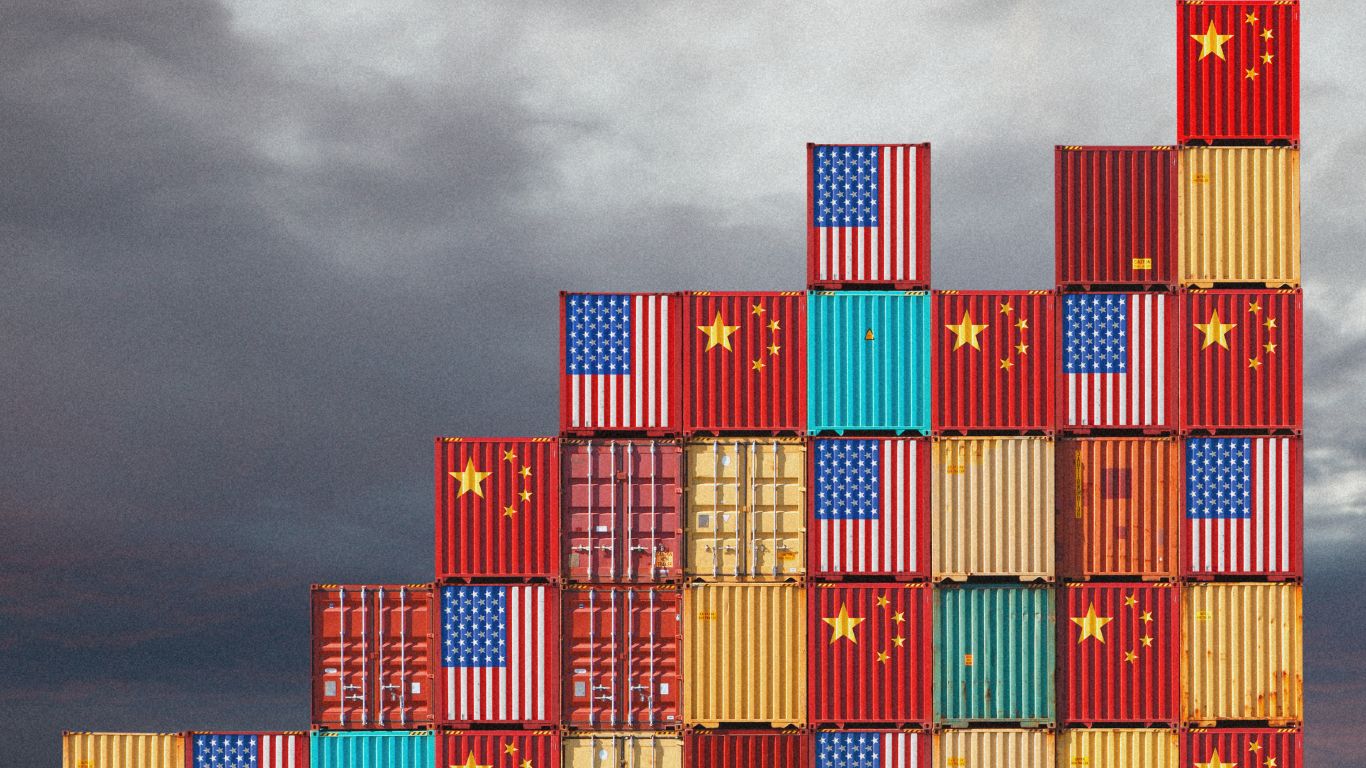How Upcoming Tariffs Could Reshape Drug Pricing, Global Manufacturing, and Supply Chains
President Trump’s latest threat to impose tariffs reaching 250% on pharmaceutical imports represents more than aggressive trade rhetoric—it signals a fundamental shift that could reshape the entire U.S. biotech and pharmaceutical landscape. Trump announced in a CNBC interview that duties would start small but escalate dramatically, stating: “We’ll be putting a initially small tariff on pharmaceuticals, but in one year — one and a half years, maximum — it’s going to go to 150% and then it’s going to go to 250% because we want pharmaceuticals made in our country.”
The escalating tariff structure, unprecedented in its scale for pharmaceutical products, threatens to disrupt established global supply chains while potentially creating both opportunities and existential challenges for domestic biotech companies. For investors, pharmaceutical operators, and policy analysts, understanding the multifaceted implications of this policy shift has become crucial for strategic planning and risk management.
The Escalation Timeline: From Token to Transformational
Trump indicated that specific details about pharmaceutical and semiconductor tariffs would be announced “within the next week or so,” suggesting that implementation could begin rapidly. The graduated escalation approach—starting with modest tariffs before reaching the 250% ceiling—appears designed to provide domestic manufacturers time to scale production while gradually making imports prohibitively expensive.
This timeline creates immediate strategic imperatives for pharmaceutical companies with international supply chains. The initial phase may cause minimal disruption, but the rapid escalation to 150% and eventually 250% tariffs within 18 months represents a complete transformation of the cost structure for imported pharmaceuticals.
The policy’s aggressive timeline also suggests limited opportunity for industry lobbying or gradual adjustment periods typical of previous trade policy implementations. Companies dependent on imported active pharmaceutical ingredients (APIs), finished dosage forms, or specialized manufacturing components face compressed timeframes for supply chain restructuring.

Supply Chain Vulnerabilities: The Import Dependency Challenge
The pharmaceutical industry’s heavy reliance on international manufacturing, particularly from China and India, makes it uniquely vulnerable to tariff-based trade policies. Approximately 80% of APIs used in U.S. medications are manufactured overseas, with China alone accounting for roughly 40% of global API production. This dependency creates both acute vulnerabilities and potential opportunities for domestic biotech companies.
Generic drug manufacturers face the most immediate threats, as their business models depend on cost efficiency enabled by low-cost manufacturing in countries like India, which produces nearly 20% of global generic drug volumes. A 250% tariff on imported generics could fundamentally alter competitive dynamics in this market segment, potentially making previously uneconomical domestic manufacturing viable.
Specialty pharmaceutical companies and biotech firms may experience different impacts depending on their manufacturing footprints and therapeutic focus areas. Companies with established U.S. manufacturing capabilities could benefit from reduced competition, while those dependent on specialized overseas contractors face significant cost increases and potential supply disruptions.
The timing implications are particularly severe for companies in late-stage clinical development or recent commercial launches. These companies often lack the financial resources or manufacturing infrastructure to rapidly reorganize global supply chains, creating potential access and pricing challenges that could affect patient outcomes and commercial viability.
Manufacturing Renaissance: Opportunities for Domestic Biotech
While the tariff threats create significant challenges, they also present unprecedented opportunities for biotech companies with domestic manufacturing capabilities or those willing to invest in U.S.-based production. The policy essentially creates artificial competitive advantages for companies that can produce pharmaceuticals within American borders.
Contract development and manufacturing organizations (CDMOs) with U.S. facilities are likely to experience surge demand as pharmaceutical companies scramble to establish domestic supply chains. Companies like Catalent, Patheon (part of Thermo Fisher), and smaller specialized manufacturers could see substantial capacity expansion opportunities driven by reshoring demand.
Emerging biotech companies in manufacturing-intensive areas like gene and cell therapy may find their U.S. production capabilities becoming significant competitive advantages. The complex manufacturing requirements for these advanced therapies already favor domestic production for regulatory and logistical reasons, and tariffs could accelerate this trend.
The policy could also stimulate investment in API manufacturing, an area where the U.S. has lost significant capacity over recent decades. Biotech companies with chemistry expertise might find new opportunities in API production for both internal use and third-party supply, potentially creating new revenue streams from previously outsourced activities.
Pricing Dynamics: Consumer Impact and Market Access
The inflationary pressure from 250% pharmaceutical tariffs would inevitably translate to higher drug prices for American consumers, creating complex dynamics around market access and affordability. While the stated policy goal involves strengthening domestic manufacturing, the immediate effect would likely be substantial cost increases for imported medications without immediate alternatives.
Insurance companies and pharmacy benefit managers (PBMs) would face difficult decisions about formulary coverage as imported drug costs surge. This could create market opportunities for domestic manufacturers able to offer competitive alternatives, but might also limit patient access to certain imported medications lacking domestic equivalents.
The pricing implications extend beyond direct import costs to include secondary effects on domestic manufacturers. Companies with existing U.S. production capabilities might find opportunities to increase prices as import competition diminishes, though regulatory scrutiny and public pressure could limit such increases.
Biosimilar manufacturers, many of which rely on overseas production, could face particularly severe impacts. The biosimilar market, already challenged by regulatory complexity and market access barriers, might see further consolidation as cost-competitive overseas manufacturing becomes prohibitively expensive.
Innovation and R&D Implications
The tariff policy’s impact on pharmaceutical innovation presents complex trade-offs between domestic manufacturing incentives and global collaboration efficiency. While encouraging domestic production, the policy might also increase development costs for biotech companies that rely on international research partnerships or specialized overseas manufacturing for clinical trial materials.
Small biotech companies in early development stages often depend on cost-effective overseas contract research organizations (CROs) and manufacturing partners. Tariffs on imported clinical trial materials or finished investigational drugs could significantly increase development costs, potentially slowing innovation or requiring additional funding rounds.
The policy might also affect international research collaborations and licensing deals, as overseas partners face increased barriers to supplying materials or finished products to U.S. markets. This could reduce the attractiveness of U.S. market access for international pharmaceutical companies, potentially limiting licensing opportunities for domestic biotech firms.
Conversely, the policy could stimulate investment in domestic research infrastructure as companies seek to avoid tariff exposure. This might accelerate development of advanced manufacturing technologies, automation systems, and innovative production methods that could strengthen long-term U.S. competitiveness.
Strategic Responses: Industry Adaptation Pathways
Pharmaceutical companies are likely to pursue various strategic responses depending on their current manufacturing footprints, therapeutic focus areas, and financial resources. Large pharmaceutical companies with diverse global operations may accelerate planned U.S. manufacturing investments while negotiating extended timelines with overseas suppliers.
Acquisition activity could intensify as companies seek to rapidly acquire U.S. manufacturing capabilities or domestic competitors with established production infrastructure. This might particularly benefit smaller biotech companies with specialized manufacturing assets that become strategic targets for larger players seeking tariff protection.
Supply chain diversification strategies may expand beyond traditional cost optimization to include tariff risk mitigation. Companies might establish manufacturing partnerships across multiple countries to create flexibility in sourcing decisions based on evolving trade policies.
Some companies may pursue legal and regulatory strategies to minimize tariff exposure, including seeking exclusions for essential medications without domestic alternatives or challenging tariff classifications for specific pharmaceutical products.
Congressional and Legal Challenges
The implementation of pharmaceutical tariffs faces potential Congressional and legal obstacles that could modify or delay the proposed timeline. Recent Government Accountability Office findings that Trump administration actions regarding NIH funding violated federal law demonstrate potential legal challenges to aggressive executive branch policy implementations.
Democratic lawmakers and some Republicans from pharmaceutical manufacturing states might oppose tariffs that could increase healthcare costs for constituents. The political dynamics around healthcare affordability could create bipartisan opposition to policies perceived as increasing prescription drug prices.
Legal challenges from pharmaceutical trade associations, individual companies, or patient advocacy groups are likely, particularly if tariffs are implemented without adequate exception processes for essential medications. Courts might scrutinize whether pharmaceutical tariffs serve legitimate national security purposes or primarily function as protectionist trade measures.
International trade partners affected by the tariffs may also pursue dispute resolution through World Trade Organization mechanisms, potentially creating additional legal and diplomatic complications for policy implementation.
Global Competitive Implications
The pharmaceutical tariff policy positions the U.S. as increasingly isolated from global pharmaceutical supply chains, with significant implications for American companies’ international competitiveness. While protecting the domestic market, the policy might also reduce U.S. pharmaceutical companies’ ability to compete globally through cost-efficient manufacturing.
Other countries may respond with retaliatory tariffs on U.S. pharmaceutical exports, potentially harming American biotech companies that depend on international markets for revenue growth. This could be particularly damaging for specialized biotech firms in areas like rare diseases, where global market access is essential for commercial viability.
The policy might also accelerate other countries’ efforts to develop independent pharmaceutical manufacturing capabilities, potentially reducing global demand for U.S. pharmaceutical exports and technology over the long term.
European and Asian pharmaceutical companies might gain competitive advantages in markets outside the U.S. as American companies focus increasingly on domestic production and market protection rather than global expansion.
Investment and Capital Market Implications
From an investment perspective, the tariff threats create both opportunities and risks that will likely drive significant capital reallocation within the pharmaceutical and biotech sectors. Companies with established U.S. manufacturing capabilities may see valuation premiums as investors recognize their protected market positions.
Venture capital and private equity investment patterns might shift toward biotech companies with domestic manufacturing strategies or those developing technologies that enable cost-effective U.S. production. This could particularly benefit companies developing innovative manufacturing platforms, automation technologies, or localized production systems.
Public market reactions will likely vary significantly based on individual companies’ import dependencies and domestic manufacturing capabilities. Companies with high overseas manufacturing exposure might face valuation discounts, while those with domestic production assets could see appreciation.
The tariff environment might also stimulate investment in pharmaceutical manufacturing infrastructure, creating opportunities for companies providing manufacturing equipment, facilities, and related services to the domestic pharmaceutical industry.
Long-term Strategic Considerations
Looking beyond the immediate implementation challenges, the pharmaceutical tariff policy represents a fundamental shift toward pharmaceutical nationalism that could reshape industry structure for decades. The policy essentially bets that protected domestic markets can support higher-cost manufacturing while maintaining innovation and competitiveness.
Success will likely depend on whether domestic manufacturing capacity can scale rapidly enough to meet demand without creating shortages or extreme price increases. The industry’s ability to develop more efficient domestic manufacturing technologies will be crucial for long-term viability of the protectionist approach.
The policy also raises questions about pharmaceutical supply chain resilience and national security. While reducing dependence on overseas manufacturing addresses some strategic vulnerabilities, it might create new risks related to domestic supply chain concentration and reduced global manufacturing redundancy.
International diplomatic and trade relationships will likely suffer as pharmaceutical tariffs are perceived as aggressive protectionism rather than legitimate national security measures. The long-term costs of damaged trade relationships might outweigh short-term domestic manufacturing benefits.
Conclusion: Navigating the New Pharmaceutical Reality
Trump’s pharmaceutical tariff threats represent more than trade policy adjustments—they signal a fundamental restructuring of how the U.S. pharmaceutical industry operates within global markets. The 250% tariff ceiling, if implemented, would create the most protectionist pharmaceutical trade environment in modern American history.
For biotech investors, the policy creates clear winners and losers based primarily on existing manufacturing footprints and strategic capabilities. Companies positioned to benefit from domestic manufacturing protection may see significant value creation, while those dependent on global supply chains face existential challenges requiring rapid strategic adaptation.
The success or failure of this pharmaceutical nationalism experiment will likely determine not just industry structure, but also American leadership in global pharmaceutical innovation and the accessibility of medications for American patients. As implementation details emerge over the coming weeks, industry participants must prepare for the most significant pharmaceutical trade policy shift in generations.



